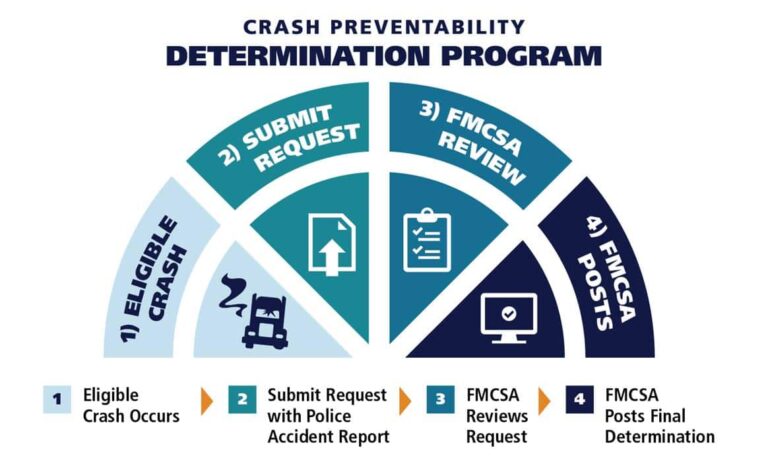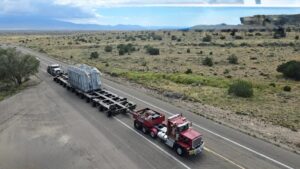WASHINGTON — The Federal Motor Carrier Administration announced Friday (May 1) that the agency has launched its Crash Preventability Determination Program (CPDP), giving motor carriers to improve their CSA (compliance, safety, accountability) scores. Under the program, motor carriers may submit a request for data review for eligible crashes that occurred on or after Aug. 1, 2019. Those requesting data review must also provide the police accident report, along with supporting documents, photos or videos, through the DataQs website.
The CPDP stems from the Crash Preventability Demonstration Program the FMCSA started in July 2017, which proposed to evaluate the preventability of eight categories of crashes through submissions of Requests for Data Review to its national data-correction system (DataQs).
On Aug. 5, 2019, based on experiences with the demonstration program, FMCSA proposed a new CPDP with a streamlined process. Based on comments received in response to the August 2019 proposal, FMCSA established the CPDP, which expands the types of eligible crashes, modifies the Safety Measurement System to exclude crashes with “not preventable” determinations from the prioritization algorithm, and notes “not preventable” determinations in the Pre-Employment Screening Program.
The following crash types are eligible for participation in the program:
Struck in the rear type of crash when the commercial motor vehicle (CMV) was struck:
- In the rear; or
- On the side at the rear.
Wrong direction or illegal turns type of crash when the CMV was struck:
- By a motorist driving in the wrong direction; or
- By another motorist in a crash when a driver was operating in the wrong direction; or
- By a vehicle that was making a U-turn or illegal turn.
Parked or legally stopped type of crash when the CMV was struck:
- While legally stopped at a traffic-control device (e.g., stop sign, red light or yield); or while parked, including while the vehicle was unattended.
Failure of the other vehicle to stop type of crash when the CMV was struck:
- By a vehicle that did not stop or slow in traffic; or
- By a vehicle that failed to stop at a traffic control device.
Under the influence type of crash when the CMV was struck:
- By an individual under the influence (or related violation, such as operating while intoxicated), according to the legal standard of the jurisdiction where the crash occurred; or
- By another motorist in a crash where an individual was under the influence (or related violation such as operating while intoxicated), according to the legal standard of the jurisdiction where the crash occurred.
Medical issues, falling asleep or distracted driving type of crash when the CMV was struck:
- By a driver who experienced a medical issue which contributed to the crash; or
- By a driver who admitted falling asleep or admitted distracted driving (e.g., cellphone, GPS, passengers, other).
Cargo/equipment/debris or infrastructure failure type of crash when the CMV:
- Was struck by cargo, equipment or debris (e.g., fallen rock, fallen trees, unidentifiable items in the road); or crash was a result of an infrastructure failure.
Animal strike type of crash when the CMV:
- Struck an animal.
Suicide type of crash when the CMV:
- Struck an individual committing or attempting to commit suicide.
Rare or unusual type of crash when the CMV:
- Was involved in a crash type that seldom occurs and does not meet another eligible crash type (e.g., being struck by an airplane or skydiver or being struck by a deceased driver).
For more information about and links to resources for the FMCSA’s Crash Preventability Determination program, click here.
Image courtesy of FMCSA.
The Trucker News Staff produces engaging content for not only TheTrucker.com, but also The Trucker Newspaper, which has been serving the trucking industry for more than 30 years. With a focus on drivers, the Trucker News Staff aims to provide relevant, objective content pertaining to the trucking segment of the transportation industry. The Trucker News Staff is based in Little Rock, Arkansas.














